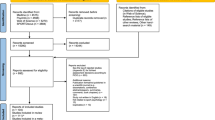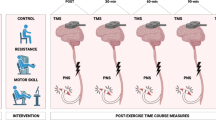Abstract
Recently, brain stimulation has been considered as a promising method for the empowerment of athletes’ performance. This study recruited 16 pistol shooters who were randomly assigned to two arms, including the control receiving no intervention and the experimental group receiving either sham or real transcranial direct current stimulation (tDCS), i.e., anodal stimulation and cathodal suppression over the cerebellar and dorsolateral prefrontal cortex (DLPFC) regions, respectively. Our outcome measures were the score and latency to shooting, as well as number of errors and task time in the dynamic tremor and mirror-tracing tasks. Our findings suggested that tDCS vs. sham improves the average shooting score in pistol shooters by 2.3% ± 0.65 (mean ± SEM, p = 0.018). Furthermore, the bullet hole distance from the Air Pistol Target center was found to be significantly shorter in the experimental (tDCS) group (p = 0.02). In the control group, no significant difference was noted between the shooting scores of shooters over the consecutive two sessions. In terms of latency to shooting, no significant difference was noted within groups between both sessions. However, for the dynamic tremor task outcome, there were significantly less errors after real tDCS than after sham stimulation. In addition, the results of the mirror-tracing task in the tDCS group showed significant differences between the sham and real-tDCS sessions favoring the real-tDCS session (p = 0.001). Therefore, concurrent suppression of dlPFC and stimulation of cerebellum through tDCS may increase shooting scores in experienced pistol shooters.






Similar content being viewed by others
References
Dayan E, Censor N, Buch ER, Sandrini M, Cohen LG. Noninvasive brain stimulation: from physiology to network dynamics and back. Nat Neurosci. 2013;16(7):838–44.
Ferrucci R, Cortese F, Priori A. Cerebellar tDCS: how to do it. Cerebellum. 2015;14(1):27–30.
Lakie M. The influence of muscle tremor on shooting performance. Exp Physiol. 2010;95(3):441–50.
Elble, R.J., Tremor, in Neuro-Geriatrics. 2017, Springer. p. 311–326.
Boecker H, Wills AJ, Ceballos-Baumann A, Samuel M, Thompson PD, Findley LJ, et al. The effect of ethanol on alcohol-responsive essential tremor: a positron emission tomography study. Ann Neurol. 1996;39(5):650–8.
Llinàs R, Negrello MN. Cerebellum. Scholarpedia. 2015;10(1):4606.
Herculano-Houzel S. The human brain in numbers: a linearly scaled-up primate brain. Front Hum Neurosci. 2009;3:31.
Buckner RL. The cerebellum and cognitive function: 25 years of insight from anatomy and neuroimaging. Neuron. 2013;80(3):807–15.
Phillips JR, et al. The cerebellum and psychiatric disorders. Front Public Health. 2015;3:66.
Tröster A, et al. Neuropsychological deficits in essential tremor: an expression of cerebello-thalamo-cortical pathophysiology? Eur J Neurol. 2002;9(2):143–51.
Brodal, P. and J.G. Bjaalie, Salient anatomic features of the cortico-ponto-cerebellar pathway in Progress in brain research. 1997, Elsevier. p. 227–249.
Grimaldi G, et al. Marked reduction of cerebellar deficits in upper limbs following transcranial cerebello-cerebral DC stimulation: tremor reduction and re-programming of the timing of antagonist commands. Front Syst Neurosci. 2014;8:9.
Galea JM, Vazquez A, Pasricha N, de Xivry JJ, Celnik P. Dissociating the roles of the cerebellum and motor cortex during adaptive learning: the motor cortex retains what the cerebellum learns. Cereb Cortex. 2010;21(8):1761–70.
Ferrucci R, Brunoni AR, Parazzini M, Vergari M, Rossi E, Fumagalli M, et al. Modulating human procedural learning by cerebellar transcranial direct current stimulation. Cerebellum. 2013;12(4):485–92.
Jayaram G, Tang B, Pallegadda R, Vasudevan EVL, Celnik P, Bastian A. Modulating locomotor adaptation with cerebellar stimulation. J Neurophysiol. 2012;107(11):2950–7.
Shah B, Nguyen TT, Madhavan S. Polarity independent effects of cerebellar tDCS on short term ankle visuomotor learning. Brain Stimulation: Basic, Translational, and Clinical Research in Neuromodulation. 2013;6(6):966–8.
Bradnam LV, et al. Anodal transcranial direct current stimulation to the cerebellum improves handwriting and cyclic drawing kinematics in focal hand dystonia. Front Hum Neurosci. 2015;9:286.
Zhu FF, Yeung AY, Poolton JM, Lee TMC, Leung GKK, Masters RSW. Cathodal transcranial direct current stimulation over left dorsolateral prefrontal cortex area promotes implicit motor learning in a golf putting task. Brain Stimulation: Basic, Translational, and Clinical Research in Neuromodulation. 2015;8(4):784–6.
Nitsche MA, Paulus W. Excitability changes induced in the human motor cortex by weak transcranial direct current stimulation. J Physiol. 2000;527(3):633–9.
Paulin MG. The role of the cerebellum in motor control and perception. Brain Behav Evol. 1993;41(1):39–50.
Nitsche MA, Cohen LG, Wassermann EM, Priori A, Lang N, Antal A, et al. Transcranial direct current stimulation: state of the art 2008. Brain Stimulation: Basic, Translational, and Clinical Research in Neuromodulation. 2008;1(3):206–23.
Steiner KM, Enders A, Thier W, Batsikadze G, Ludolph N, Ilg W, et al. Cerebellar tDCS does not improve learning in a complex whole body dynamic balance task in young healthy subjects. PLoS One. 2016;11(9):e0163598.
Schneider CA, Rasband WS, Eliceiri KW. NIH Image to ImageJ: 25 years of image analysis. Nat Methods. 2012;9(7):671–5.
Julius MS, Adi-Japha E. A developmental perspective in learning the mirror-drawing task. Front Hum Neurosci. 2016;10:83.
Laporte W. The influence of a gymnastic pause upon recovery following post office work. Ergonomics. 1966;9(6):501–6.
Louis ED, Yousefzadeh E, Barnes LF, Yu Q, Pullman SL, Wendt KJ. Validation of a portable instrument for assessing tremor severity in epidemiologic field studies. Mov Disord. 2000;15(1):95–102.
Keeser D, Meindl T, Bor J, Palm U, Pogarell O, Mulert C, et al. Prefrontal transcranial direct current stimulation changes connectivity of resting-state networks during fMRI. J Neurosci. 2011;31(43):15284–93.
Vitor-Costa M, Okuno NM, Bortolotti H, Bertollo M, Boggio PS, Fregni F, et al. Improving cycling performance: transcranial direct current stimulation increases time to exhaustion in cycling. PLoS One. 2015;10(12):e0144916.
Okano, A.H., et al., Brain stimulation modulates the autonomic nervous system, rating of perceived exertion and performance during maximal exercise. Br J Sports Med, 2013 p. bjsports-2012-091658.
Morton SM, Bastian AJ. Cerebellar control of balance and locomotion. Neuroscientist. 2004;10(3):247–59.
Clark VP, Coffman BA, Mayer AR, Weisend MP, Lane TDR, Calhoun VD, et al. TDCS guided using fMRI significantly accelerates learning to identify concealed objects. Neuroimage. 2012;59(1):117–28.
Reis J, Schambra HM, Cohen LG, Buch ER, Fritsch B, Zarahn E, et al. Noninvasive cortical stimulation enhances motor skill acquisition over multiple days through an effect on consolidation. Proc Natl Acad Sci. 2009;106(5):1590–5.
Borducchi DM, et al. Transcranial direct current stimulation effects on athletes’ cognitive performance: an exploratory proof of concept trial. Front Psychol. 2016;7:183.
Funding
This work was supported by the grant received from DANA Brain Health Institute; Iranian Neuroscience Society, Fars Chapter, Shiraz, Iran.
Author information
Authors and Affiliations
Corresponding author
Ethics declarations
This study was approved by the Ethics Committee of Baghiatallah University of Medical Sciences (proposal code: 96-06-001639).
Conflict of Interest
The authors declare that they have no conflict of interest.
Statement of Informed Consent
Informed written consent was obtained from the participants for the research procedure.
Electronic supplementary material
Supplementary Fig. 1
(PNG 1.35 mb)
Rights and permissions
About this article
Cite this article
Kamali, AM., Nami, M., Yahyavi, SS. et al. Transcranial Direct Current Stimulation to Assist Experienced Pistol Shooters in Gaining Even-Better Performance Scores. Cerebellum 18, 119–127 (2019). https://doi.org/10.1007/s12311-018-0967-9
Published:
Issue Date:
DOI: https://doi.org/10.1007/s12311-018-0967-9




